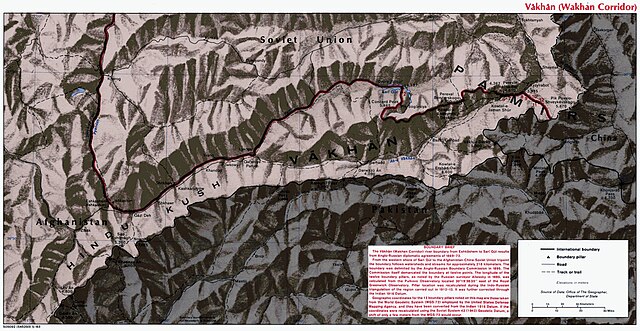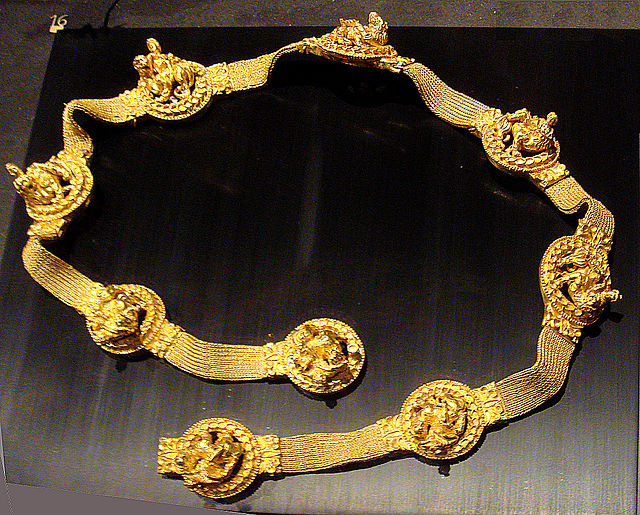The Afghanistan–China border is a 92-kilometre-long (57 mi) boundary between Afghanistan and China, beginning at the tripoint of both countries with the Pakistan's federally administered territory of Gilgit-Baltistan, following the watershed along the Mustagh Range, and ending at the tripoint with Tajikistan. This short border is in the far northeast of Afghanistan, distant from much of the country or urban areas in either country, at the end of the long, narrow Wakhan Corridor. The Chinese side of the border is in the Chalachigu Valley. The border is crossed by several mountain passes, including Wakhjir Pass in the south and Tegermansu Pass in the north.
Afghanistan-China Boundary (1969), includes most of the features mentioned in the 1963 treaty
Border region (DMA, 1980)
Satellite image of the region with the Afghanistan–China border marked
Wakhan Corridor including Afghanistan–China border
Afghanistan, officially the Islamic Emirate of Afghanistan, is a landlocked country located at the crossroads of Central Asia and South Asia. Referred to as the Heart of Asia, it is bordered by Pakistan to the east and south, Iran to the west, Turkmenistan to the northwest, Uzbekistan to the north, Tajikistan to the northeast, and China to the northeast and east. Occupying 652,864 square kilometers (252,072 sq mi) of land, the country is predominantly mountainous with plains in the north and the southwest, which are separated by the Hindu Kush mountain range. Kabul is the country's largest city and serves as its capital. According to the World Population review, as of 2023, Afghanistan's population is 43 million. The National Statistics Information Authority of Afghanistan estimated the population to be 32.9 million as of 2020.
Tents of Afghan nomads in the northern Badghis province. Early peasant farming villages came into existence about 7,000 years ago.
A "Bactrian gold" Scythian belt depicting Dionysus, from Tillya Tepe in the ancient region of Bactria
Portrait of Ahmad Shah Durrani c. 1757
Afghan tribesmen in 1841, painted by British officer James Rattray








